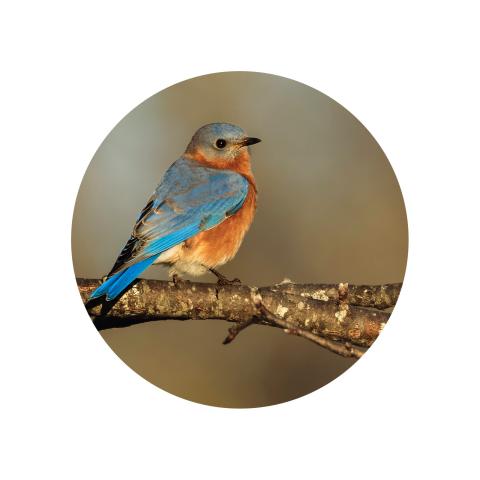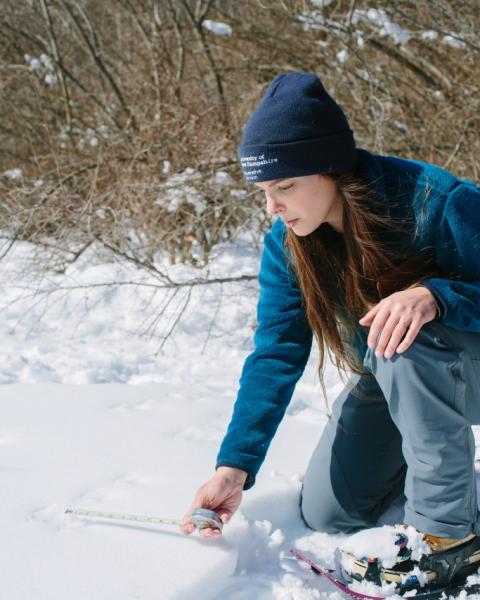This information was created in partnership with NH Fish & Game.
Here’s why the New Hampshire Fish and Game Department urges you to NOT feed the deer
Feeding deer often makes them more vulnerable to starvation, predation, disease, and vehicle collisions, among other things.
A Little Deer Biology
White-tailed deer in New Hampshire are at the northern limit of their range and have several natural adaptations that help them survive the winter. These include a thick winter coat of hollow hairs and the storage of fat in fall for later use during winter. Adult deer lose up to 20 percent of their body weight during winter, regardless of the amount or quality of food present.
Adult deer get as much as 40 percent of their daily energy during winter from their fat tissue.
During winter, cover – not forage – becomes the key to survival. Deer seek softwood cover (deer yards) to avoid deep snow, high winds and extreme cold. Deer move little in these areas and use a network of trails collectively created. Travel is easier, as is escape from predators. Wintering deer tend to disperse over an area large enough to reduce competition for food and risk of predation.
Despite these adaptations, some deer will die in winter. This occurs more commonly in older or smaller deer, especially among those with fewer fat reserves. If winter ends before the fat reserves are expended, the deer survives. If fat reserves are gone before winter ends, the deer dies. Therefore, any activity that increases energy use can lead to the death of individual deer and reduce the population.
“I fed deer one winter, but have since stopped because the bigger deer kicked at the smaller ones. I know people care about deer, but wild animals are supposed to live on wild food. If deer depend on us for food, then they are no longer wild.” Harmony Anderson Strafford landowner
Supplemental Feeding Can Harm Deer
Feed sites congregate deer into unnaturally high densities. These high deer densities can:
- attract predators and increase risk of death by coyotes or domestic dogs.
- spread disease among deer.
- cause aggression, wasting vital energy reserves and leading to injury or death.
- reduce fat reserves as deer use energy traveling to and from the feed site.
- result in over-browsing of local vegetation and ornamental plants.
- deny access to food, because subordinate deer are kept away from feeding stations, and over-browsing by larger deer removes food available to fawns.
- increase deer-vehicle collisions. Vehicle-killed deer near feed sites can outnumber those that would naturally succumb to winter mortality.
Other Problems Associated with Feed Sites:
- Tamer Deer Feed sites cause deer to depend less on their natural environment and more on humans. Deer may lose their fear of humans and become habituated to feed sites.
- Transition from Browse to Feed Deer receive little nutritional value from a new food source for about two weeks of feeding, since stomach microorganisms must adjust to the diet change. Ironically, while well-intentioned people try to help the deer by feeding, they may be harming them due to the time and energy needed to convert the microorganisms.
- Inferior Habitat and Traveling Energy Feed sites lure deer away from natural wintering areas. This attraction can trap deer in inferior winter habitat and increase the chance of malnutrition and predation.
- Unintended Impacts on Good Winter Cover Timber companies and other landowners alter cutting practices to protect good deer yards. If deer go to feed sites instead of protected deer yards, then the timber companies will see little value in continuing to protect the wintering areas. Further, young deer that associate feeding sites with winter habitat may never learn to occupy natural winter habitat. Thus, feeding may produce long-term habitat loss and critical behavioral change. The New Hampshire Fish and Game Department’s Position The New Hampshire Fish and Game Department recognizes the long-term viability of the deer herd is not dependent on supplemental winter feeding anywhere in the state.
The Fish and Game Department does not advocate the supplemental feeding of deer, will not participate in winter feeding efforts and urges landowners to not provide supplemental feed to deer.
How You Can Help Deer
For the long-term health of deer, the best management strategy is to keep deer dependent on their natural food and cover. A healthy deer population will be sustained if New Hampshire maintains mature softwood wintering areas, young hardwood stands, nut-producing trees (like oak and beech) and forest openings.
Landowners can help by developing a management plan that uses wildlife and its habitat as guiding objectives. Sustainable timber harvesting is compatible with protecting winter deer yards and other deer habitat features. Also, landowners can recognize the role of hunters as the primary tool for wildlife biologists to regulate deer densities. Allowing hunter access to huntable lands is an effective way to maintain a healthy balance between deer and their habitat.
For more information:
- Feeding Wildlife … Just Say No!” a 34-page booklet by the Wildlife Management Institute, $3.25; WMI Publications, PO Box 34646, Washington, D.C. 20043.

